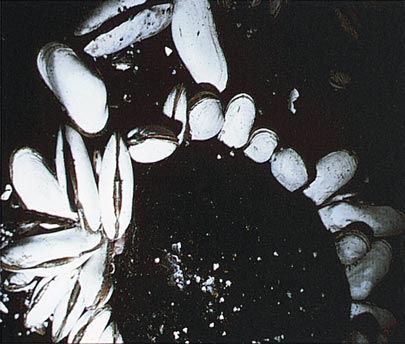
This Article From Issue
July-August 2000
Volume 88, Number 4
DOI: 10.1511/2000.29.0
The Ecology of Deep-Sea Hydrothermal Vents. Cindy Lee Van Dover. xx + 424 pp. Princeton University Press, 2000. $85 cloth, $39.50 paper.
Investigation of deep-sea vents has been conducted for only a quarter of a century, yet the discoveries that have been made are remarkable and as dramatic as those of the space program; and, like the space program, such study is costly and dangerous. The wealth of data produced has led to the development of several fields of biology never even imagined earlier. This impressive, eminently readable book surveys the deep-sea vent environment and its ecology, drawing on a large body of widely scattered literature (perhaps as many as 1,000 references are cited). The author, an ecologist, was for two years a pilot of the deep-sea submersible Alvin and thus knows the technology as well as the science of this field. She takes a multidisciplinary approach, as the following sentence illustrates: "Few biologists concern themselves with magma chambers, yet the spacing and longevity of hydrothermal-vent habitats are directly related to the character of the underlying magma, so it helps to appreciate what seismologists have learned about ridge-crest magma chambers." Many of her geologic summaries are of interest to land-based geologists; teachers of oceanography, microbiology, ecology and related fields will also find the book particularly useful.

From The Ecology of Deep-Sea Hydrothermal Vents
After surveying nonvent deep-sea research, the author describes the geologic setting of the vents, the physical and chemical properties of vent fluids and general features of heated water plumes; included is a good general survey of new concepts of seafloor spreading, rift formation and underwater volcanics. The ecology of the collected microbes and their symbiotic relationships to the larger members of the biota are discussed. The development of a living community not based on photosynthesis as the ultimate energy source is an astounding area of vent investigation. Other topics covered include the ways vent organisms have evolved to exploit their environment, the food web at vent sites, and population maintenance and patterns of distribution of vent species. The vents are ephemeral, which raises questions regarding biologic growth, the interaction among organisms present and how they might move from a dying vent to one that would sustain them.
A chapter on community dynamics leads into one on evolution and biogeography. There are differences between vent communities in the Atlantic and those in the Pacific as well as differences among those in different parts of the Pacific. Discoveries of hot-water vent communities, communities based on methane discharge, and cold-water seeps have often made the newspapers. The penultimate chapter on these cognate communities compares and contrasts several kinds of habitats. The final chapter deals with hydrothermal systems and the origin of life, showing how vent biota have changed the focus of that gradually developing investigation.
The text's 200 illustrations are invaluable; they include four color plates, one summarizing the basic geology of ridges and seafloor spreading, and three showing deep-sea biota.—Ellis L. Yochelson, Department of Paleobiology, National Museum of Natural History, Smithsonian Institution, Washington, DC
American Scientist Comments and Discussion
To discuss our articles or comment on them, please share them and tag American Scientist on social media platforms. Here are links to our profiles on Twitter, Facebook, and LinkedIn.
If we re-share your post, we will moderate comments/discussion following our comments policy.